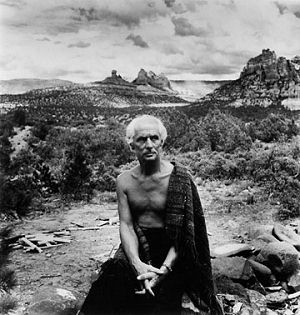
Long before Max Ernst ever laid eyes on the fantastic landscapes of the Sedona desert in Arizona, he had already dreamed of it in his paintings. Persecuted in France for being German and by Nazi Germans for being anti-Nazi, Ernst was forced to leave Europe during World War II, not without having spent a bit of time at a French prison camp.
It was American heir Peggy Guggenheim who hauled Ernst and the bulk of his paintings across the Atlantic to the safety of of America. Max who would soon fall in love with -and marry- the painter Dorothea Tanning, was not looking to settle down in Arizona; it was more like Sedona found him.
As Ernst and his wife were travelling by car all the way from New York to California, they crossed the Sedona desert and Max was fascinated to find that what he had painted in his works was alive there, away from all the madding crowds. There were no resorts in Sedona at the time, no homes in the area, and it was insane to think of living there, in the middle of the desert, but Max decided that he had to build a house right there, by the side of the landscapes that had inspired him, before he even knew they existed.
The story is told by the protagonists themselves, as portrayed in Peter Schamoni’s excellent film about Ernst:
Needless to say, there were no hotels to speak of around Sedona, Arizona then; so Max and Dorothea just had to load their car with everything they needed and come back to start building the house of their dreams.
Ernst always turned the houses he lived in into works of art: he sculpted strange creatures all around his house in the South of France, he painted frescos on all the walls of Paul Eluard’s home while he stayed there, and the Sedona, Arizona home was no exception. Max made huge sculptures that adorned the yard and he enjoyed one of the most productive periods in his life while he was there.
Visiting the houses of Max Ernst in France and in Sedona is something I would recommend to anybody remotely interested in Art. As a matter of fact, I have been chasing them for some years now, still without success; but I know that I will see them one day.
One of my favorite, perhaps my all-time favorite Max Ernst painting is in fact EUROPA NACH DEM REGEN (Europe after the rain), which is a painting inspired by the destruction of the Second world war in Europe, that deeply prefigures the Sedona landscapes Max would later encounter.
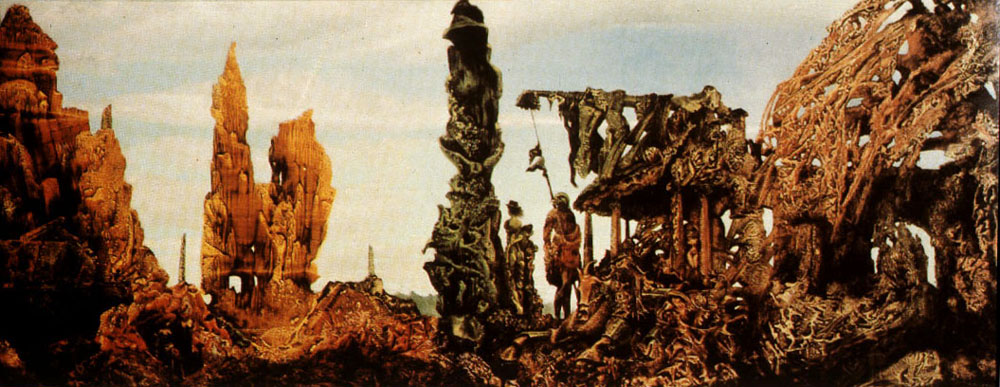

Whether we attribute Max’s discovery to a prophetic gift, which as we can see from his words on the video, he was very reluctant to do, or not; one cannot stop thinking that this was a sort of magical encounter between an artist and one special corner of the Earth that could provide the best environment for the creation of his art.
Ever since the times of Ernst’s life, Sedona has greatly changed. There are now some great hotels there, and the good thing is that their architecture has been designed to blend in with the surrounding landscape. Such is the case of the beautiful Hyatt Pinion Pointe, to name just one among the many inns and motels with fantastic views abundant in the area.
If you are interested in visiting Sedona, check out this story. Learn more about Max and Dorothea´s love story on this article by The Guardian.
Other than a visit to Sedona, I can also recommend taking an interest in Ernst himself. An artist who never surrendered to politics or dogma, Ernst is not only an icon of painting but also of independent thought. To learn more about Max and enjoy more of his art I recommend my favorite book on him, which was published on the ocassion of the 100th anniversary of his birth: Max Ernst: A retrospective
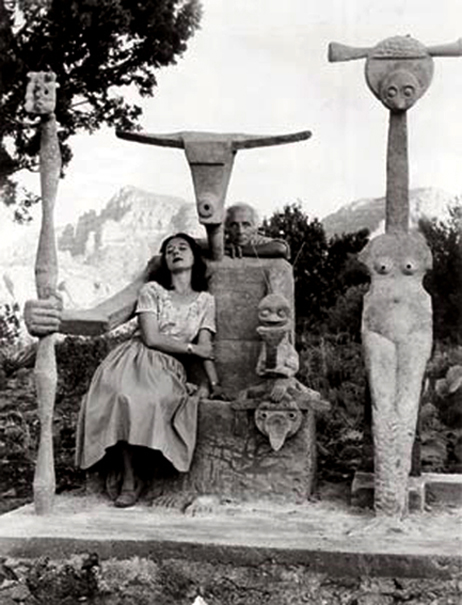
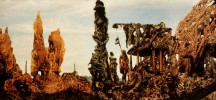
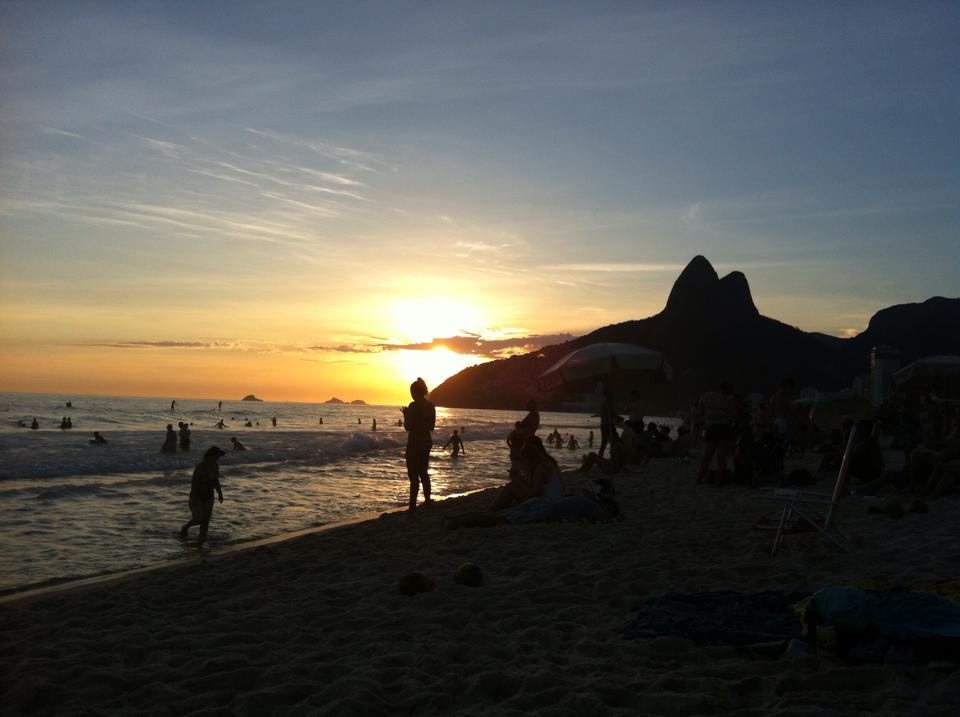
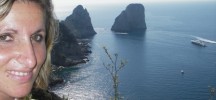

hi there, i used one of these pics for a flash on max ernst. perhaps you like it – perhaps you want to submit something of your own – we’d be delighted! see you over there at the kaffe. cheers!
hi, a mag wants to print my story on max ernst and they’ve asked about the copyright for the photograph of max ernst in the desert that appears on your blog. do you have any idea where it is from? many thanks!
Hi Marcus,
The photo is supposed to be in the public domain,
but I can´t trace it back anymore.
I just searched all over.
If you check one of those huge illustrated bios, the photo will surely be there with all the info, and you can just mention the photographer, I assume.
Good luck!
Veronica
What a beautiful post. I loved Sedona but I had no idea about Max Ernst. Thank you!
Wow I’ve been to Sedona, several times and i never new this story! I love Arizona, it’s a beautiful place.
Thanks for shearing.
I was contacted recently by two German musician/composers about swapping the use of my painting LopLop and Dorothea for their album Lop-Lop’s Call. I spent some time tracking down Ernst’s house in Sedona about 15 years ago so it’s rather amusing to see so much on the internet about it now. I thought you’d be interested in the album:
A few years late but, the photograph of Dorothea Tanning, Max Ernst and the sculpture called ‘Capricorn’ is by John Kasnetsis, taken in 1947.
I have spent several days at his Sedona house. It’s not very fancy but the art work is very interesting. The present owner of the house was a friend of mine. He inherited the property. At the time I stayed there I did not know who Max Ertst was
Thanks for sharing this Linda! If you have the exact address of the house or a photo, I would really appreciate, so I can see it on my next visit… Best, Veronica